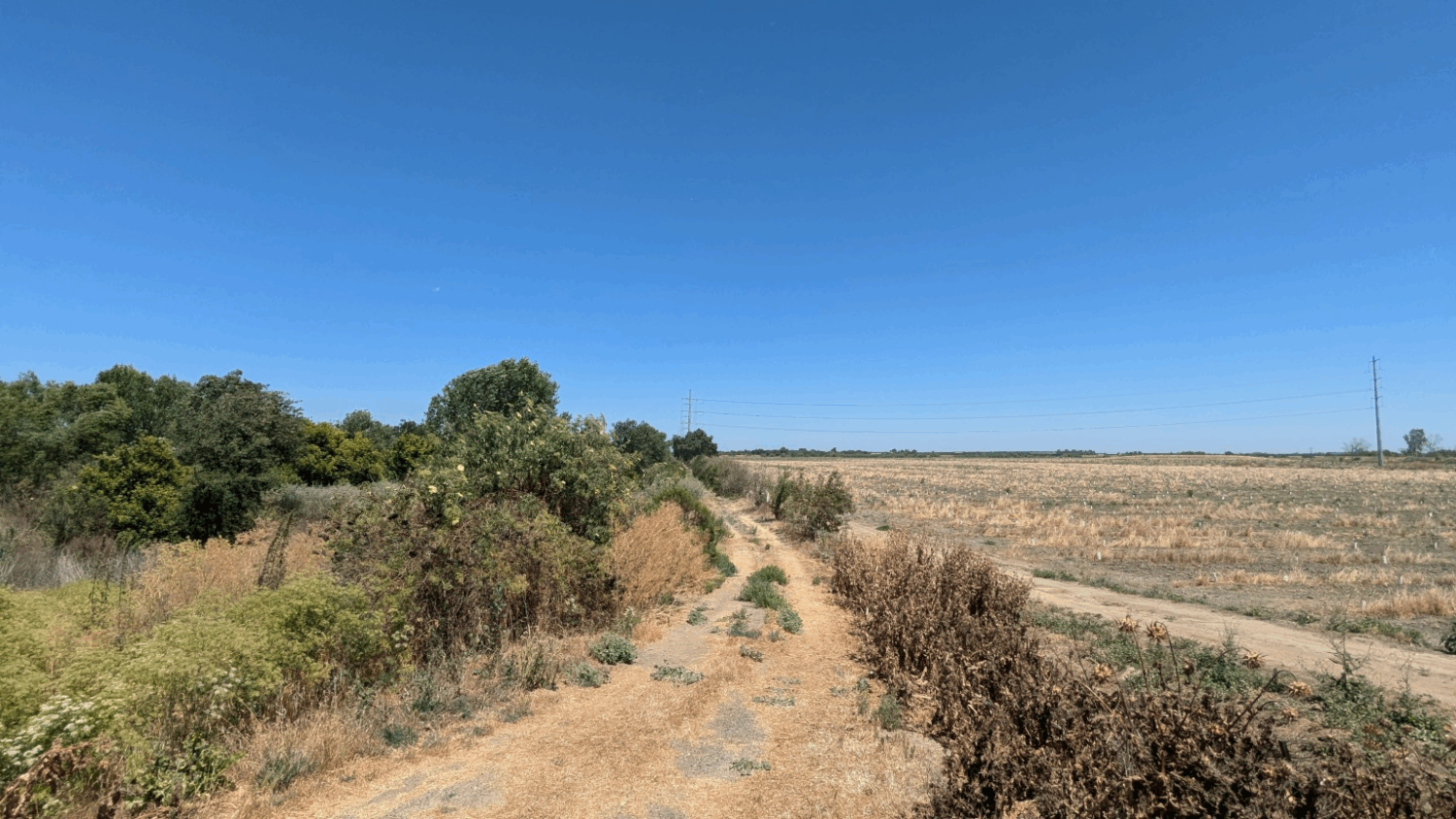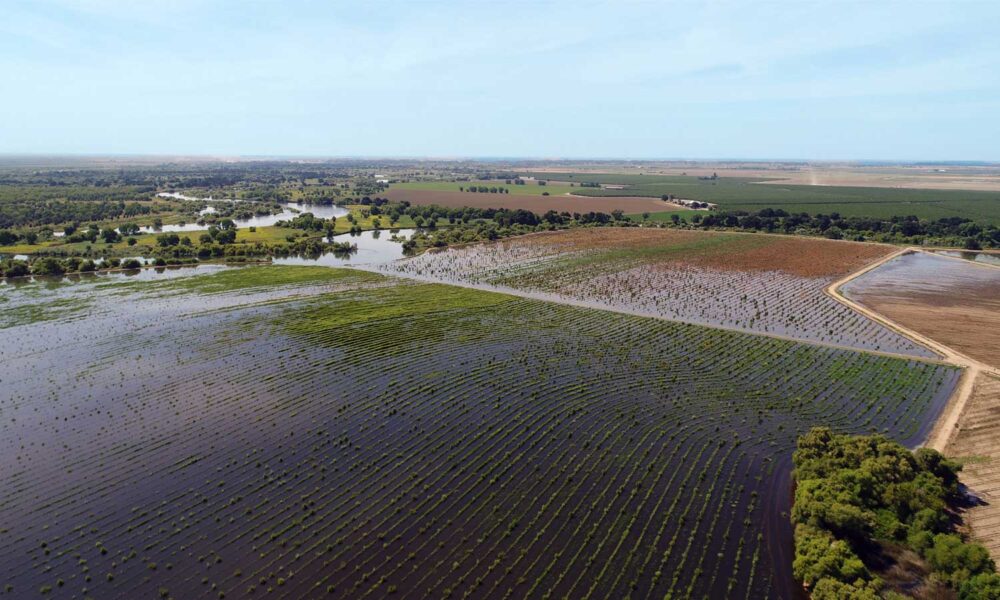Unsustainable groundwater overpumping in California has triggered the need to transition hundreds of thousands of acres of irrigated agricultural land into less water-intensive activities to make water use sustainable. I’m not gonna lie: this is not an easy task.
It’s challenging to know what actions at the system level will maintain our rural economies and improve public and environmental health without creating new problems. And it’s even more difficult to know how to implement system-wide solutions in a transdisciplinary context of multibenefit collaboration that’s rather new to everyone involved. But cropland repurposing into other beneficial land uses is a promising solution to address many system-level issues and make everyone happy.
The good news is that we are learning, and we are improving.
After years of work done by our community of practice and scientists, we just published a much needed and comprehensive framework for best practices in cropland repurposing that can benefit everyone involved. This community of practice includes community leaders, farmer and farmworker advocates, scientists, and practitioners across California’s agricultural regions.
Our team of 54 authors—along with additional collaborators and countless participants in public events related to land repurposing— is clear that the framework is not about taking land away from farmers or abandoning agriculture. Our goal is to collectively reimagine how we can use land to create multiple benefits while addressing the water crisis head-on and support food and nutrition security.
I am a romantic and also an agricultural engineer who loves agriculture, and along with many community residents and farmers, I believe we can transform the current unsustainability into new sustainable opportunities for prosperity and well-being while keeping our rural communities’ identities. And we can preserve the most beautiful side effects of agriculture while limiting the negative side effects and economic extraction of some corporative large-scale practices. As a wise t-shirt once said, “Keep the CULTURE in AgriCULTURE”.
In addition to our recent Roadmap for a Just Land Transition, our team of 54 coauthors (with the help of many collaborators and participants in public events) published a paper introducing a framework for best practices in cropland repurposing in the journal Frontiers in Water. In the next sections of this blog I will briefly summarize some of the most important takeaways from this work
The challenge we face
California’s Sustainable Groundwater Management Act (SGMA) requires the state to achieve groundwater sustainability by mid-century. In the San Joaquin Valley where I live, agriculture represents 90% of water use, and a large part of that water use is unsustainable. This means about one million acres of irrigated agriculture will need to transition to other uses. Letting market forces of commodity and property values continue to dictate the terms of this transition could devastate local economies by threatening farmer and farmworker livelihoods.
What I’ve learned through years of community engagement is the importance of cropland repurposing being strategically organized and managed in collaboration with all impacted groups. A holistic and inclusive approach can enhance quality of life in low income and underserved communities, diversify regional economies, generate local socioeconomic opportunities, and improve environmental health—all while advancing water sustainability and food security, and maintaining the livelihoods of farmers and farmworkers.
A vision for what’s possible
The framework our paper introduces is built around six core objectives that represent “what we want to see” in land repurposing decisions. These aren’t abstract goals—they’re practical priorities informed and agreed upon by everyone in our expert author team and our collaborators.
Socioenvironmental and economic justice in the land surrounding vulnerable communities, and respecting and upholding Indigenous sovereignty.
Ecological resilience and sustainability involves restoring native habitats, creating nature-based solutions around agricultural communities, and managing natural resources responsibly so future generations can meet their needs too.
Sustainable agriculture based on agroecology principles focuses on farming systems that are healthy, economically viable, and ecologically sustainable for farmers, farmworkers, and communities, with fair land access, economic resilience, sustainable water use, access to technical assistance, and improved working conditions.
Funding, scalability, and replicability ensures that initiatives can grow from local to regional levels while maintaining community priorities and creating genuine job security in the transition to a green economy.
Leadership, accountability, and representation emphasizes bottom-up leadership with meaningful involvement from all groups involved, and it includes robust monitoring to prove that benefits are actually being delivered.
Multiple benefits to address social needs encompasses everything from food security and affordable housing to mental health support and educational opportunities that help agricultural communities thrive.

Seven best practices for cropland repurposing
To implement this vision of what’s possible, our team identified and recommends seven essential best practices. For more detail about each, including ideas around implementation strategies, check the framework or the paper. We also provide some specific best practices for an essential topic, aquifer recharge.
1. Prioritize public health
Every cropland repurposing project must guarantee no harm to public health while actively improving conditions.
2. Prioritize cropland repurposing in socioenvironmentally vulnerable locations
Cropland repurposing efforts maximize the return on investment when they are near disadvantaged communities and sensitive environments, and vulnerable communities can improve their economic prosperity with non-extractive green economic activities.
3. Transition agricultural practices for sustainability and strategic farming
Agricultural transitions create the most value when they shift from large water-intensive monocultures to smaller-scale, diverse, multifunctional land uses like agroecological systems that deliver multiple public benefits.
4. Foster a sustainable agricultural economy
Agricultural resilience increases when it protects small and mid-size farmers through practical support like equipment sharing cooperatives, revenue diversification opportunities such as agrivoltaics and decentralized composting, and enhanced water access for those practicing beneficial methods.
5. Advance equity and center community leadership
Cropland repurposing plans that reflect local priorities, address local needs, and holistically consider the whole system are more likely to succeed. This requires transparent processes that use full cost-benefit accounting (including the costs and benefits of side effects) and meaningful community engagement.
6. Pursue a just clean energy transition
California’s clean energy transition will happen in rural areas and must involve collaborative partnerships with communities, include binding community benefits agreements, and ensure that local communities benefit from the clean energy generated in and near their communities.
7. Expand skill-building, outreach, and access to information
This involves providing inclusive, multilingual education and training programs, community monitoring of environmental conditions, and fair compensation for those who contribute to planning and implementation processes.
Real examples, real results
These aren’t just theoretical concepts. Across California, communities are already implementing these ideas with remarkable success:
- In Madera County, the La Viña community is receiving a buffer zone project that converts almond and walnut orchards into native pollinator habitat, creating a 100-foot barrier between homes and farms to improve air quality and reduce pesticide exposure.

- The Wukchumni Tribe is restoring 10.7 acres of riparian woodland and wetlands in Tulare County, incorporating traditional land uses while creating educational and workforce opportunities.

- In Tulare County, the township of Allensworth is planning to transform industrial monoculture into an agroecology hub owned by a community trust, featuring regenerative agriculture, agrivoltaics, farmer training programs, water treatment technology, and agritourism.

The path forward
This framework and our road map for just land transition represent more than just objectives and best practices to guide agricultural land repurposing efforts; they offer a detailed, evidence-based roadmap for transforming California’s approach to land use in ways that benefit everyone. If the areas actively repurposing cropland adopt this framework, they will be more likely to succeed in creating a just land transition, including water sustainability.
The consequences of inaction are clear and we cannot afford them: continued groundwater depletion, degraded communities, and an agricultural and economic system that’s increasingly vulnerable to climate change.
But with strategic, collaborative action guided by this framework and experts with holistic approaches to equitably serve everyone involved in this transition, we can turn this into an opportunity to build something better together.
The choice is ours. We can let market forces alone determine how this transition unfolds, exacerbating existing inequalities and destroying rural economies. Or we can work together to implement these best practices, ensuring that the shift toward social, environmental, and economic sustainability becomes a foundation for prosperity, well-being, and climate resilience in California’s agricultural regions.
To learn more, you can read the framework only here. We also have a glossary you can check out if you want to know better understand some of the vocabulary we rely on. Many experts contributed to this effort beyond our author team, including our collaborators who are listed in the acknowledgements.

